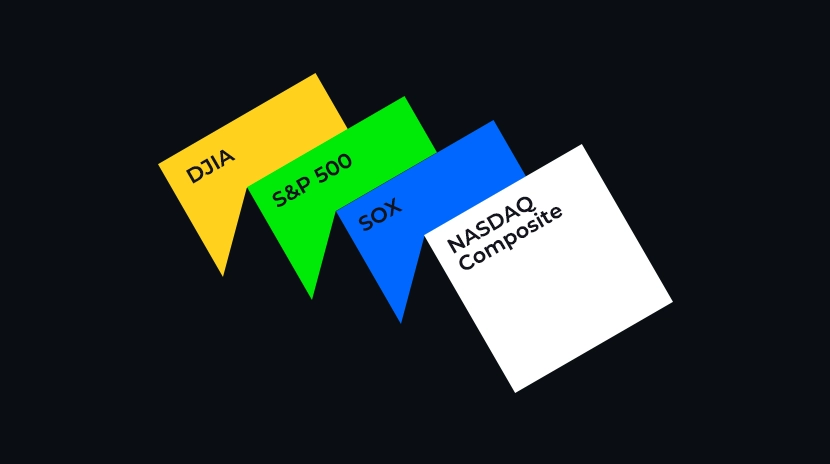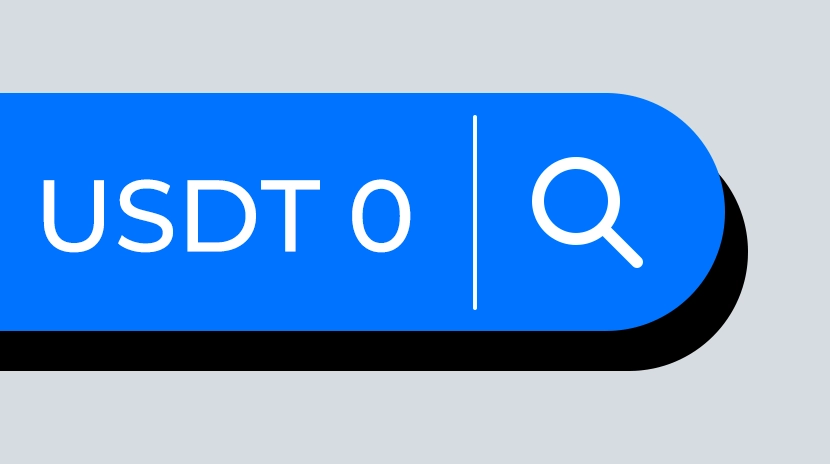Repensando a propriedade, moedas estáveis e tokenização (com Addison)
Addison (@0xaddi) e eu tenho discutido recentemente o interesse significativo em TradFi x cripto e seus casos de uso principais reais. Abaixo, formalizamos as conversas que tivemos em torno do sistema financeiro dos EUA e como a cripto pode se encaixar a partir de uma abordagem de primeiros princípios:
- A narrativa atual afirma que a tokenização resolverá muitos problemas financeiros, o que pode ou não ser verdade.
- Stablecoins causam emissão líquida de novos recursos, assim como os bancos. A trajetória atual das stablecoins levanta questões significativas sobre como elas se relacionam com o sistema bancário tradicional de reserva fracionária — onde os bancos mantêm apenas uma fração dos depósitos como reservas, enquanto emprestam o restante, criando efetivamente novos recursos líquidos.
Tokenização tornou-se a coisa atual
A narrativa agora é que "tokenizar tudo" - de ações de mercados públicos a ações de mercado privado e T-bills - será bom para as criptomoedas e para o mundo. Para pensar sobre o que está acontecendo no mercado a partir de uma abordagem de primeiros princípios, é útil passar:
1) como o sistema atual de propriedade de ativos opera;
2) como a tokenização mudaria esse sistema;
3) por que isso é necessário em primeiro lugar; e
4) o que são os “true dollars” e como o novo dinheiro líquido é criado.
Atualmente nos Estados Unidos, grandes emissores de ativos (como ações negociadas publicamente) concedem direitos de custódia de seus certificados para oDTCCO DTCC então rastreia a propriedade das aproximadamente 6.000 contas que interagem com ele, as quais por sua vez gerenciam seu próprio registro de propriedade para seus usuários finais. Para empresas privadas, o modelo é ligeiramente diferente: empresas como Carta apenas gerenciam o registro para negócios.
Ambos os modelos envolvem escrituração altamente centralizada. O modelo da DTCC tem uma 'boneca babushka' de escrituração, onde um indivíduo pode passar por 1-4 entidades diferentes antes de chegar à entrada real no livro-razão com a DTCC. Essas entidades podem incluir a corretora ou banco onde o investidor tem uma conta, o custodiante ou empresa de compensação do corretor e a própria DTCC. Embora o usuário final médio (varejo) não seja afetado por essa hierarquia, ela cria um trabalho significativo de due diligence e risco legal para as instituições. Se a própria DTCC nativamente tokenizasse seus ativos, a dependência dessas entidades diminuiria à medida que se torna mais fácil interagir diretamente com a câmara de compensação - mas esse não é o modelo proposto pelo discurso popular hoje em dia.
Os modelos atuais de tokenização envolvem uma entidade que detém um ativo subjacente como um item de linha dentro de um livro razão mestre (por exemplo, como um subconjunto das entradas no DTCC ou Carta) e, em seguida, cria uma nova representação tokenizada de suas participações para uso onchain. Esse modelo é inerentemente ineficiente, pois cria mais uma entidade que pode extrair valor, criar risco de contraparte e causar atrasos de liquidação/desanuviamento. A introdução de outra entidade quebra a capacidade de composição porque causa uma etapa extra para "embrulhar e desembrulhar" a segurança para interagir com o resto do tradfi ou defi, o que pode causar atrasos.
Pode ser mais otimizado que todos os ativos sejam nativamente 'tokenizados' colocando o livro-razão do DTCC ou da Cartaonchain, dando a todos os detentores de ativos os benefícios da programabilidade.
Um dos principais argumentos para permitir a tokenização de ações é o acesso ao mercado global e a negociação e liquidação 24 horas por dia, 7 dias por semana. Se a tokenização for o mecanismo pelo qual as ações são "entregues" às pessoas nos mercados emergentes, então isso seria, claro, uma melhoria em salto na forma como o sistema atual opera e abriria acesso aos mercados de capitais americanos para bilhões de pessoas. Mas ainda não está claro se a tokenização via blockchain é necessária, porque a tarefa é principalmente regulatória. Está aberto a questionamentos se a tokenização de ativos seria uma arbitragem regulatória eficaz da mesma forma que as moedas estáveis são em um horizonte de tempo longo o suficiente. Da mesma forma, um caso comum para a tokenização de ações é a perenidade; no entanto, o bloqueador para perenidade (incluindo ações) é inteiramente regulatório e não técnico.
Moedas estáveis (dólares tokenizados) são semelhantes em estrutura às ações tokenizadas, mas a estrutura de mercado das ações é muito mais complicada (e altamente regulamentada) para incluir um conjunto de câmaras de compensação, bolsas e corretores. As ações tokenizadas são inerentemente diferentes dos criptoativos “normais”, que não são “garantidos” por nada, mas são nativamente tokenizados e compostos (por exemplo, BTC).
Para mercados onchain eficientes, todo esse sistema TradFi precisaria ser replicado, o que é uma tarefa incrivelmente complicada e hercúlea devido à concentração de liquidez e aos efeitos de rede existentes. Simplesmente colocar ações tokenizadas onchain não será uma panaceia, pois garantir que sejam líquidas e componíveis com o restante do TradFi exigirá uma quantidade significativa de reflexão e infraestrutura. No entanto, se o Congresso aprovar uma lei que permita que as empresas emitam diretamente títulos digitais onchain (em vez de fazer um IPO), isso eliminaria a necessidade de muitas entidades do tradfi (e há uma chance de que isso possa ser detalhado no novo projeto de estrutura de mercado). As ações tokenizadas também reduziriam os custos de conformidade para abrir capital no sentido tradicional.
Neste momento, os governos dos mercados emergentes não têm incentivos para legalizar o acesso aos mercados de capitais dos EUA, uma vez que preferem manter o capital endógeno às suas próprias economias; para os Estados Unidos, abrir o acesso pelo lado americano introduziria problemas de AML.
Além disso: Em certo sentido, a estrutura de Entidade de Interesse Variável (VIE) utilizada pela Alibaba ($BABA) nas bolsas dos EUA já representa uma forma de 'tokenização' onde os investidores americanos não possuem diretamente ações nativas da BABA, mas em vez disso possuem uma empresa das Ilhas Cayman com direitos contratuais à economia da Alibaba. Isso realmente abre o mercado, mas também cria uma entidade totalmente nova e novas ações que aumentam drasticamente a complexidade em torno desses ativos.
True dollars & the Fed
Um verdadeiro dólar é uma entrada no livro de contas do Federal Reserve. Atualmente, existem aproximadamente~4.500 entidades(bancos, cooperativas de crédito, certas entidades governamentais, etc) que têm acesso a esses "verdadeiros dólares" por meio de uma Conta Principal do Fed. Nenhuma dessas entidades são cripto nativas, a menos que você considere o Banco Lead e o Banco Column, que atendem a clientes de cripto selecionados comoPonteCom uma Conta Master, essas entidades têm acesso ao Fedwire, uma rede de pagamentos super barata e quase instantânea onde uma transferência pode ser enviada 23 horas por dia e liquidada praticamente instantaneamente. Os dólares reais estão no M0: a soma de todos os saldos no livro-razão principal do Fed. Os dólares "falsos" ("criados" através de empréstimos por bancos privados) são o M1, que é aproximadamente 6 vezes o tamanho do M0.
Interagir com dólares reais na verdade é uma experiência de usuário muito boa: custa apenas cerca de 50 centavos para uma transferência e você obtém liquidação instantânea. Sempre que você envia dinheiro da sua conta bancária, seu banco interage com o Fedwire, que tem quase uma disponibilidade perfeita, liquidação instantânea e baixos atrasos de transferência - mas o risco regulatório, requisitos de AML e detecção de fraudes fizeram com que os bancos colocassem muitos obstáculos em torno de grandes pagamentos (essa é a origem da fricção do usuário final).
Com esta estrutura, um caso de baixa para moedas estáveis seria a ampliação do acesso a estes "dólares verdadeiros" através de um sistema instantâneo que não requer um intermediário que 1) receba o rendimento subjacente (verdade para as duas maiores moedas estáveis) e 2) limite o acesso ao resgate. Atualmente, os emissores de moedas estáveis se associam a bancos que, por sua vez, têm Contas Mestras no Fed (Circle com JP Morgan / BNY Mellon) ou com instituições financeiras com acesso significativo ao sistema bancário dos EUA (Tether com Cantor Fitzgerald).
Então, por que os emissores de moedas estáveis não gostariam de ter uma Conta Mestra do Fed eles mesmos, se é essencialmente um código de trapaça onde eles obtêm rendimento do tesouro 100% livre de riscos com 1) sem problemas de liquidez e 2) tempos de liquidação mais rápidos?
O argumento de que um emissor de moeda estável obtenha uma Conta Mestre do Fed provavelmente seria rejeitado de maneira semelhanteA aplicação do Narrow Bank foi rejeitada(e, além disso, bancos de criptomoedas como a Custodia também têmvem sendo consistentemente negadoNo entanto, é possível que a Circle tenha um relacionamento suficientemente próximo com seus bancos parceiros para que uma conta mestra não represente uma melhoria significativa na movimentação de dinheiro.
A razão pela qual não seria do interesse do Fed aprovar uma aplicação de Conta Mestra de emissores de moeda estável é porque o modelo do dólar é apenas compatível com o sistema bancário de reserva fracionária: toda a economia é construída sobre os bancos tendo alguns pontos percentuais de reservas.
Essencialmente, é assim que o novo dinheiro é criado por meio de dívidas e empréstimos — mas se alguém pode acessar 100% ou 90% do risco de taxa de juros sem risco (sem dinheiro emprestado para hipotecas, empresas, etc), por que alguém usaria um banco normal? E se não usarem bancos normais, não haverá depósitos para criar empréstimos e mais dinheiro, e a economia entraria em colapso.
Dois dosprincípios fundamentais citados pelo FedEm relação à elegibilidade da Conta Mestre incluem 1) conceder uma conta mestre a uma instituição não deve introduzir risco cibernético indevido e 2) não deve interferir na implementação da política monetária do Fed. Por esses motivos, conceder aos emissores de moedas estáveis uma Conta Mestre - pelo menos da forma como existem atualmente - é improvável.
A única situação em que os emissores de stablecoins podem, de fato, obter acesso à Conta Principal é no caso de eles "se tornarem" um banco (o que eles provavelmente não querem ser). A Lei GENIUS estabeleceria uma regulamentação semelhante à de um banco para emissores com mais de US$ 10 bilhões em valor de mercado – essencialmente, o argumento aqui é que, uma vez que eles serão regulados como um banco, independentemente disso, eles poderiam operar mais como um banco em um horizonte de tempo longo o suficiente. No entanto, os emissores de stablecoins ainda não poderiam se envolver em práticas bancárias semelhantes a reservas fracionárias sob a Lei GENIUS por causa darequisito de reserva 1:1.
Até o momento, as moedas estáveis não foram regulamentadas até a extinção, porque a maioria delas existe offshore via Tether. O Fed está bem com a dominância do dólar se estendendo globalmente dessa maneira — mesmo que não seja via o modelo de banco de reserva fracionária — porque fortalece o dólar como moeda de reserva. Mas se uma entidade como a Circle (ou até mesmo um banco estreito) fosse ordens de magnitude maior e estivesse sendo usada em contas estilo depositário em escala nos EUA, o Fed e o tesouro provavelmente estariam preocupados (porque tira dinheiro dos bancos que seguem o modelo de reserva fracionária onde o Fed pode implementar sua política monetária).
Este é fundamentalmente o mesmo problema que um banco de moeda estável enfrentaria: para fazer empréstimos, é necessária uma licença bancária - mas se uma moeda estável não é lastreada por dólares verdadeiros, então ela não é realmente mais uma moeda estável e derrota todo o propósito. Aqui é onde o modelo de reserva fracionada 'quebra'. Em teoria, no entanto, uma moeda estável poderia ser criada e emitida por um banco autorizado (que possui uma Conta-Mestra) que opera um modelo de reserva fracionada.
Bancos vs. crédito privado vs. moedas estáveis
O único benefício de se tornar um banco é o acesso a uma conta mestra da Fed e seguro FDIC. Esses dois recursos permitem que os bancos digam aos seus depositantes que seus depósitos estão seguros "dólares reais" (apoiados pelo governo dos EUA) apesar de todos estarem emprestados.
Para fazer empréstimos, você não precisa ser um banco (empresas de crédito privado fazem isso o tempo todo). No entanto, a distinção entre um banco e crédito privado é que com um banco, você recebe um “recibo” que é percebido como USD real. Assim, ele é fungível com todos os outros recibos de outros bancos. O respaldo dos recibos bancários é totalmente ilíquido; no entanto, o recibo é totalmente líquido. Essa conversão de depósitos em ativos ilíquidos (empréstimos), mantendo a percepção de que os depósitos mantêm seu valor, é a essência da produção de dinheiro.
No mundo do crédito privado, seu recibo é marcado com o valor dos empréstimos subjacentes. Assim, nenhum novo dinheiro é criado; você não pode realmente gastar seu recibo de crédito privado.
Vamos explicar os análogos aos bancos e crédito privado em cripto usando Aave. Crédito privado: No mundo existente, você deposita USDC na Aave e recebe aUSDC. aUSDC não é totalmente garantido o tempo todo por USDC, porque alguns dos depósitos são emprestados aos usuários em empréstimos colateralizados. Assim como os comerciantes não aceitarão a propriedade de crédito privado, você não pode gastar aUSDC.
No entanto, se os participantes econômicos de alguma forma estivessem dispostos a aceitar um USDC da mesma maneira que o USDC, o Aave seria funcionalmente equivalente a um banco onde o aUSDC é o USD que ele diz aos depositantes que possui, enquanto todo o suporte (USDC) é emprestado.
Um exemplo simples à parte: Addison dá ao Bridget Credit Fund $1.000 de crédito privado tokenizado, que pode ser gasto como se fosse dólares. Em seguida, Bridget dá os $1.000 para outra pessoa através de um empréstimo, e agora há $2.000 de valor no sistema ($1.000 que foi emprestado + $1.000 do Fundo Bridget tokenizado). Neste caso, o $1.000 emprestado é apenas uma dívida e funciona como um título: uma reivindicação sobre os $1.000 que Bridget emprestou a outra pessoa.
Moedas estáveis: dinheiro novo líquido ou não?
Se o argumento acima for aplicado às moedas estáveis, então as moedas estáveis criam funcionalmente “dinheiro líquido novo.” Para ilustrar isso ainda mais:
- Digamos que você compre um Título do Tesouro por $100 do governo dos EUA. Agora você possui um Título do Tesouro que não pode ser realmente gasto como dinheiro, mas você pode vendê-lo por um preço de mercado flutuante. Nos bastidores, o governo dos EUA está gastando esse dinheiro (porque é inerentemente um empréstimo).
- Digamos que você envie $100 para a Circle e, com esse dinheiro, eles compram T-bills. O governo está gastando esses $100 — mas você também está. Você recebe 100 USDC que podem ser gastos em qualquer lugar.
No primeiro caso, havia um título do tesouro com o qual você não podia fazer nada. No segundo caso, a Circle criou uma representação do título do tesouro que era utilizável da mesma forma que os dólares são.
Com base em cada dólar depositado, a quantidade de 'emissão de dinheiro' para moedas estáveis é marginal porque a maioria das garantias de moedas estáveis está em títulos do tesouro de curto prazo que não estão sujeitos a movimentos de taxa. A emissão de dinheiro dos bancos por dólar é muito maior porque seus passivos têm prazos muito mais longos e são empréstimos mais arriscados. Quando você resgata seu T-bill, está obtendo dinheiro do governo ao vender mais um T-bill - e o ciclo continua.
É um pouco irônico que dentro dos valores ciberpunk da criptografia, cada vez que uma moeda estável é emitida, ela apenas torna mais barato para o governo tomar emprestado e inflar (mais demanda por títulos do tesouro, que efetivamente é apenas gasto do governo).
Se as moedas estáveis crescerem o suficiente (por exemplo, se a Circle tivesse ~30% de M2 - atualmente as moedas estáveis representam 1% de M2), elas poderiam potencialmente representar uma ameaça para a economia americana. Isso ocorre porque cada dólar que se move dos bancos para as moedas estáveis reduz a oferta de dinheiro líquido (porque o dinheiro que os bancos 'criam' é mais do que o dinheiro criado pela emissão de moedas estáveis), o que anteriormente era uma operação exclusiva do Fed. As moedas estáveis também enfraquecem o poder do Fed na implementação da política monetária através do sistema bancário de reserva fracionária. Dito isso, os benefícios das moedas estáveis globalmente são indiscutíveis: elas espalham a dominação do dólar, fortalecem a narrativa da moeda de reserva em USD, tornam os pagamentos transfronteiriços mais eficientes e ajudam imensamente as pessoas fora dos EUA que precisam de acesso a uma moeda estável.
E quando o fornecimento de moedas estáveis atingir trilhões, emissores de moedas estáveis como a Circle podem se tornar parte integrante da economia dos EUA, e os reguladores vão descobrir como entrelaçar as necessidades de política monetária e dinheiro programável (isso entra no território das CBDCs, o que vamos deixar para mais tarde).
Aviso Legal:
- Este artigo é reproduzido a partir de [ Bridget]. Todos os direitos autorais pertencem ao autor original [Bridget]. Se houver objeções a esta reimpressão, entre em contato com o Gate Learnequipe e eles vão lidar com isso prontamente.
- Isenção de Responsabilidade: As visões e opiniões expressas neste artigo são exclusivamente do autor e não constituem qualquer conselho de investimento.
- A equipe Gate Learn faz traduções do artigo para outros idiomas. Copiar, distribuir ou plagiar os artigos traduzidos é proibido, a menos que seja mencionado.
Artigos Relacionados

Top 10 Empresas de Mineração de Bitcoin

Um Guia para o Departamento de Eficiência Governamental (DOGE)

Explicação detalhada de Yala: Construindo um Agregador de Rendimento DeFi Modular com a Stablecoin $YU como um Meio

O que é Stablecoin?

Análise dos quatro principais índices do mercado de ações dos EUA: Composição e diferenças


